We have to go back to 2002 to know the first chapter of the R (Racing) at Volkswagen. Since then, more than 200,000 models bearing the letter R have been delivered, but what brings us here is the first of them all, and probably the most desired. We refer, of course, to the Volkswagen Golf R32 (IV).
The R32 has had a profound impact on Golf. Let's be honest, at the time, the Golf GTI walked the streets of bitterness. If the first Golf GTI, launched in 1976, was primarily responsible for making hot hatches popular, on the Golf IV the historic acronym was reduced to a level of equipment.
The GTIs differed little or nothing from the rest of the Golfs and greatly disappointed in the performance and dynamics chapters, precisely where it had earned its reputation. The redemption of the acronym GTI would only happen in the 5th generation, but before that the Golf IV would find its way back into the hearts of enthusiasts with the R32.
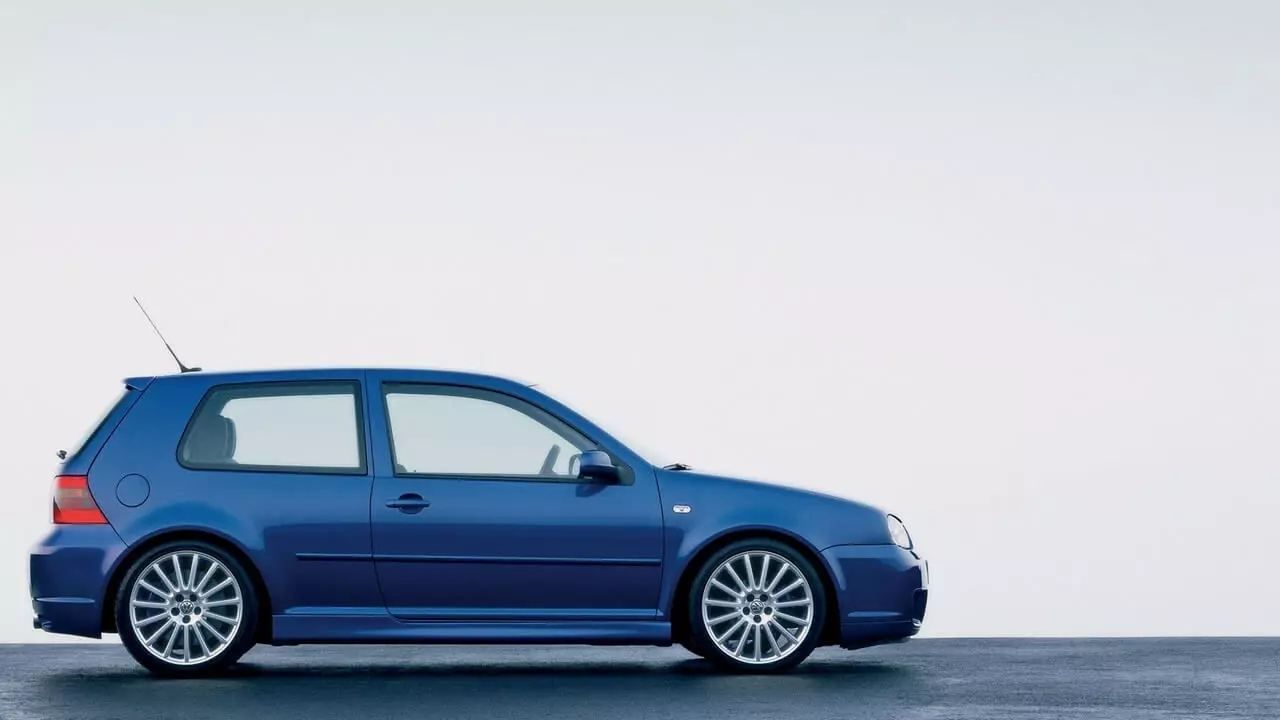
The Volkswagen Golf R32 thus came as a shock — despite the brutal evolution in parameters such as quality, the Golf IVs were definitely not for those looking for some thrill at the wheel.
Subscribe to our newsletter here
The R32 Golf
Visually, the transformation was subtle: the front bumpers gained volume and larger air intakes, at the back there was space for two exhaust outlets; there were new side skirts; the wheels grew up to 18″ (with 225/40 tyres), duly filling the generous arches, also contributing to the effect the 20 mm less ground clearance; and finally, discreet R32 emblems.
Nothing flashy — the opposite of a Civic Type R — tasteful, and capable of standing the test of time — the Golf IV is still considered, and rightly so, the best designed of all Golfs.
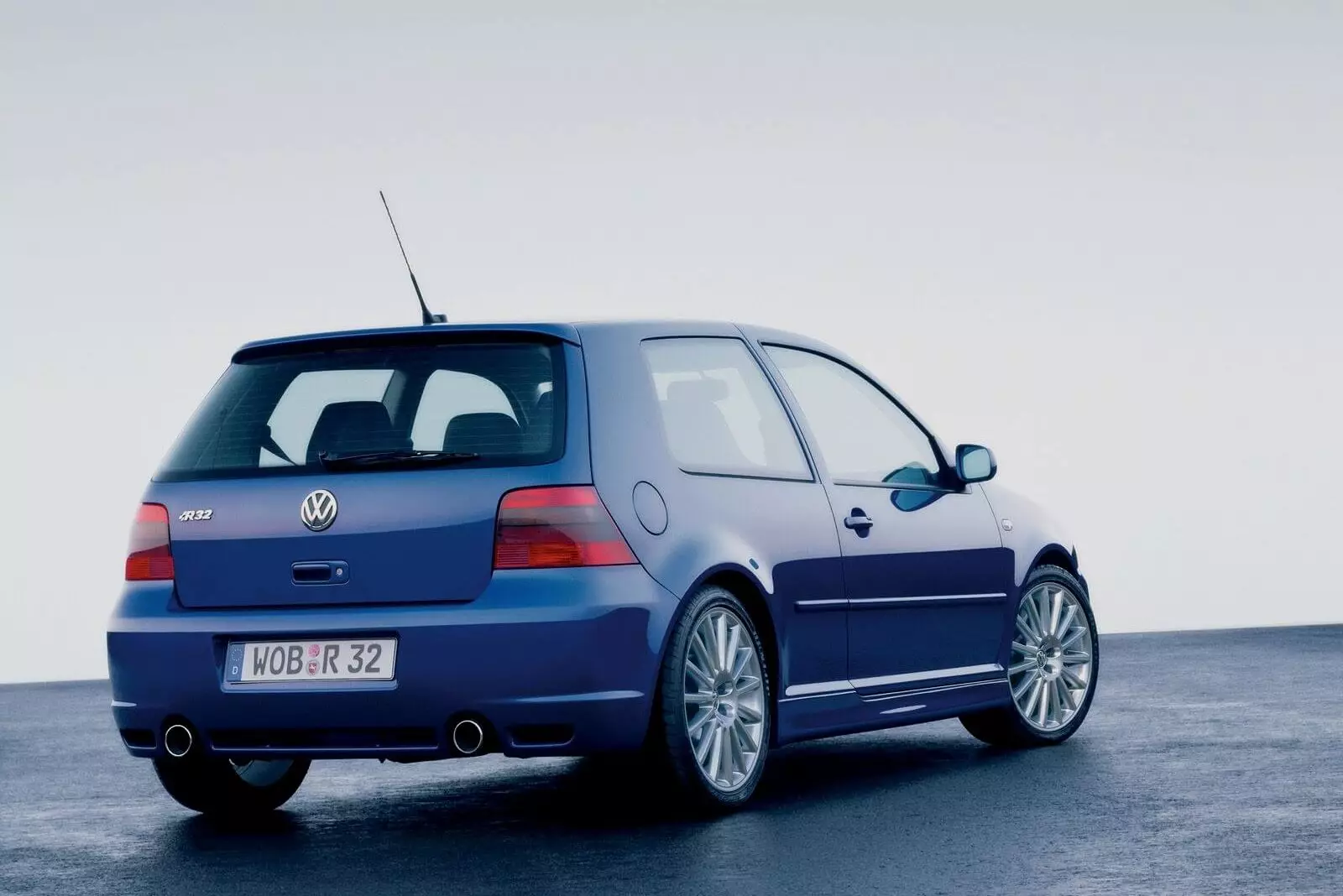
But the real transformations were hidden under the appealing bodywork. Underneath the bonnet was a new version of the famous VR6 — an engine that has equipped the Golfs since the 3rd generation — here with 3.2 l, justifying the alphanumeric nomenclature R32, with a multi-valve head, four per cylinder, 24 valves in total.
It delivered 241 hp — at the time a very high number for a hot hatch — and 320 Nm, whose values were distributed over the four wheels (Haldex AWD system), via a six-speed manual transmission or a dual-clutch transmission, making it the first production car to come equipped with such an option — it was just ahead of the Audi TT 3.2 quattro, with which it shared mechanics and a large part of the chassis.
Even today, the performance can be considered very good, with 100 km/h being reached in less than 7s, and capable of reaching a maximum speed of 247 km/h, regardless of the type of transmission.
behavior, the surprise
But it would be in the dynamic chapter that the Golf R32 would truly surprise. The chassis had to rise to the height of the noble mechanics, with the rear adopting an independent multi-link layout (standard on the Golf 4Motion only) instead of the semi-rigid rear axle.
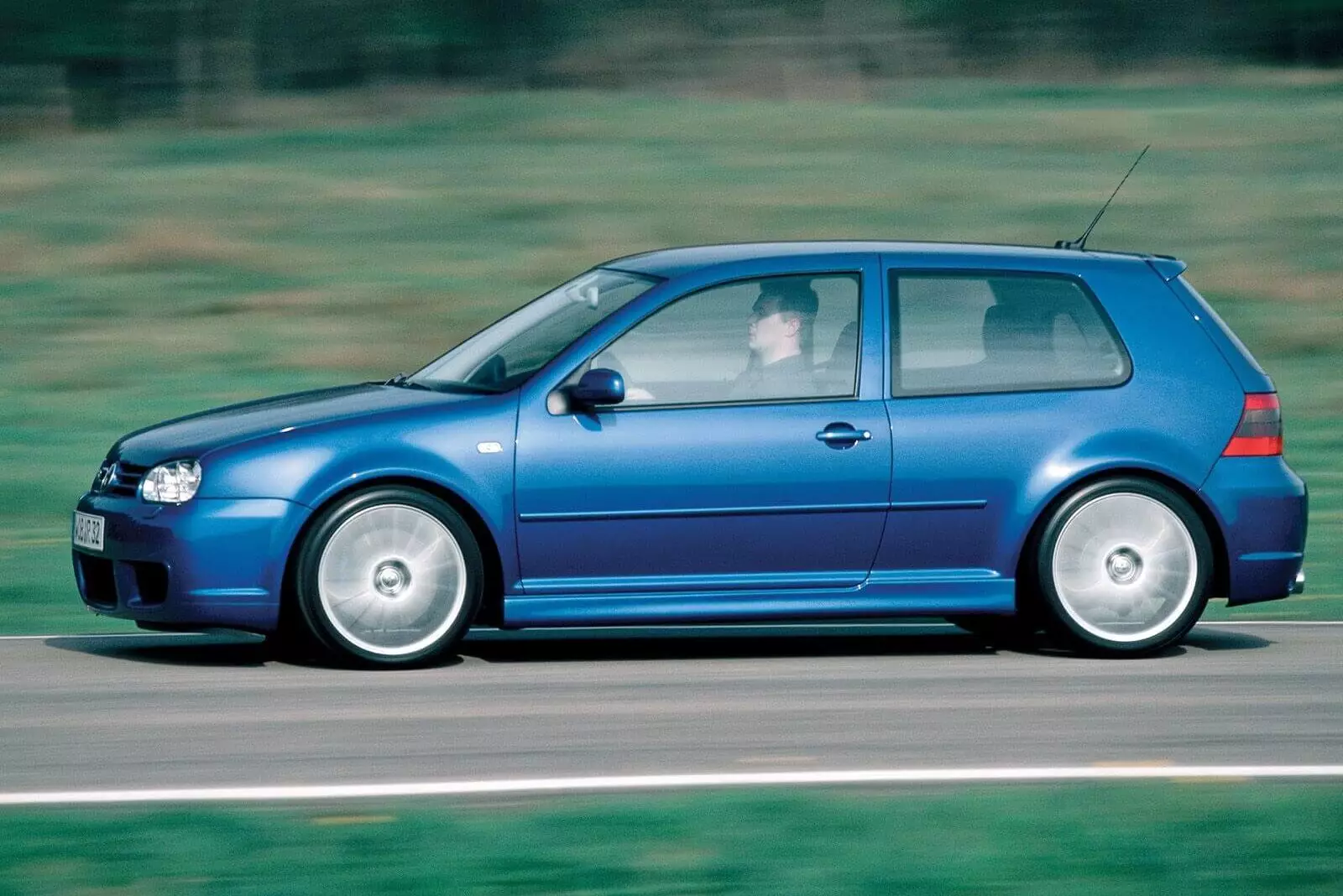
On paper, the Golf's hefty weight could play against you — at the front hung a heavy VR6 and the R32 weighed almost 1500 kg (without driver) — a current Volkswagen Golf R manages to be a few tens of pounds lighter. But the tests at the height tell another story.
Here was a Golf like you hadn't seen for many years: not only was the VR6 energetic to use, accompanied by a captivating sound, the chassis also demonstrated the ability to keep up with it, thanks to precise steering and the ability to adjust trajectory according to the pressure on the right pedal, with the Haldex system to be critical in avoiding understeer situations. Despite its weight, the Volkswagen Golf R32 proved to be agile, surprising even the most skeptical.
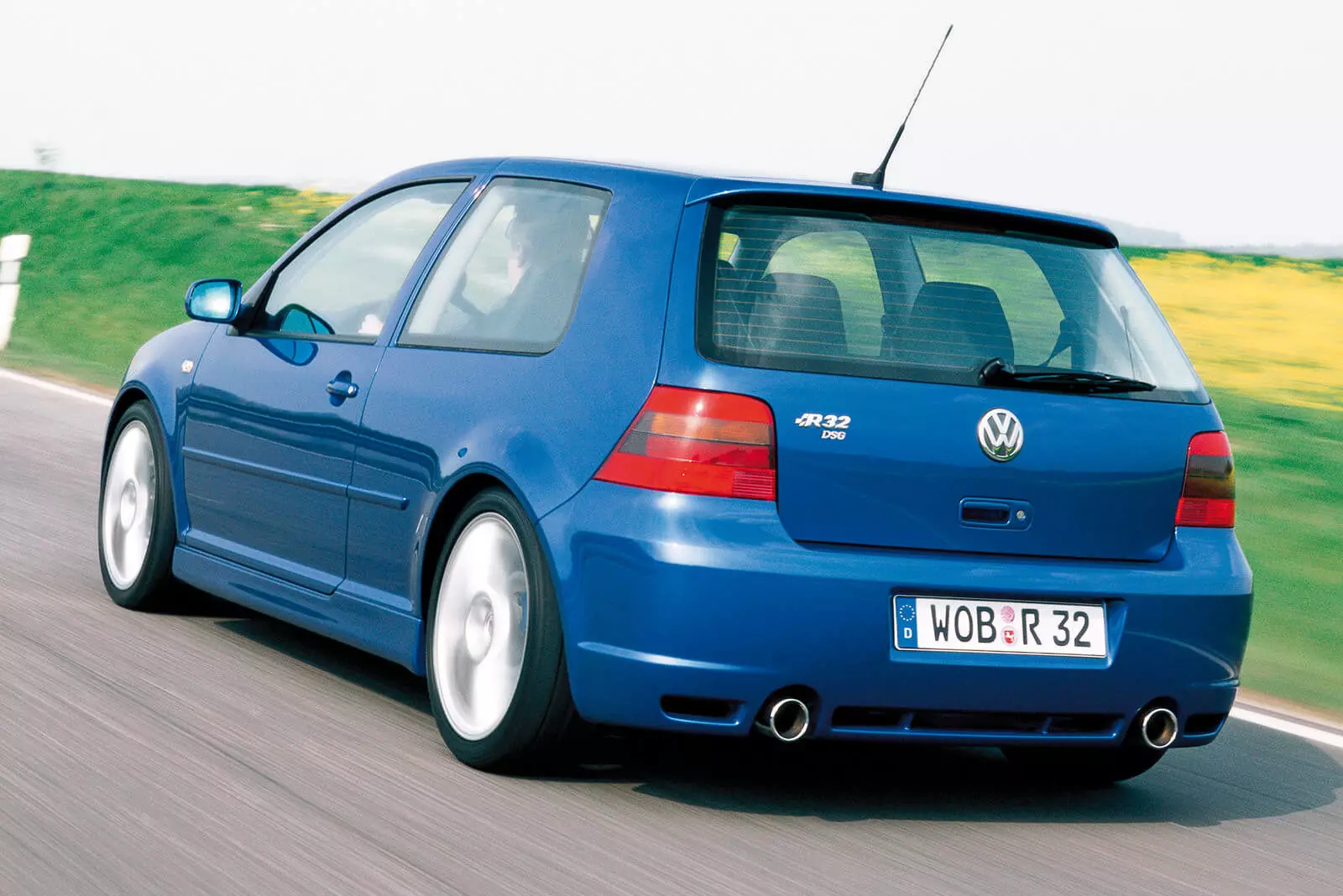
Legacy
The Volkswagen Golf R32 IV was a milestone and a success. It took the Golf out of the dynamic mediocrity it was in and set a new level of performance. And success because, despite having been planned as a limited edition of 5000 units, in the end around 12,000 would be produced, with the US contributing decisively to the accounts, absorbing more than 40% of the production.
Its successors stuck to the formula — the VR6 would last another generation, with the 2.0 TSI taking its place from the Golf VI — and even today, despite the absence of a more “nobler” engine, the Golf Rs continue to be considered by many to be the best Golf.
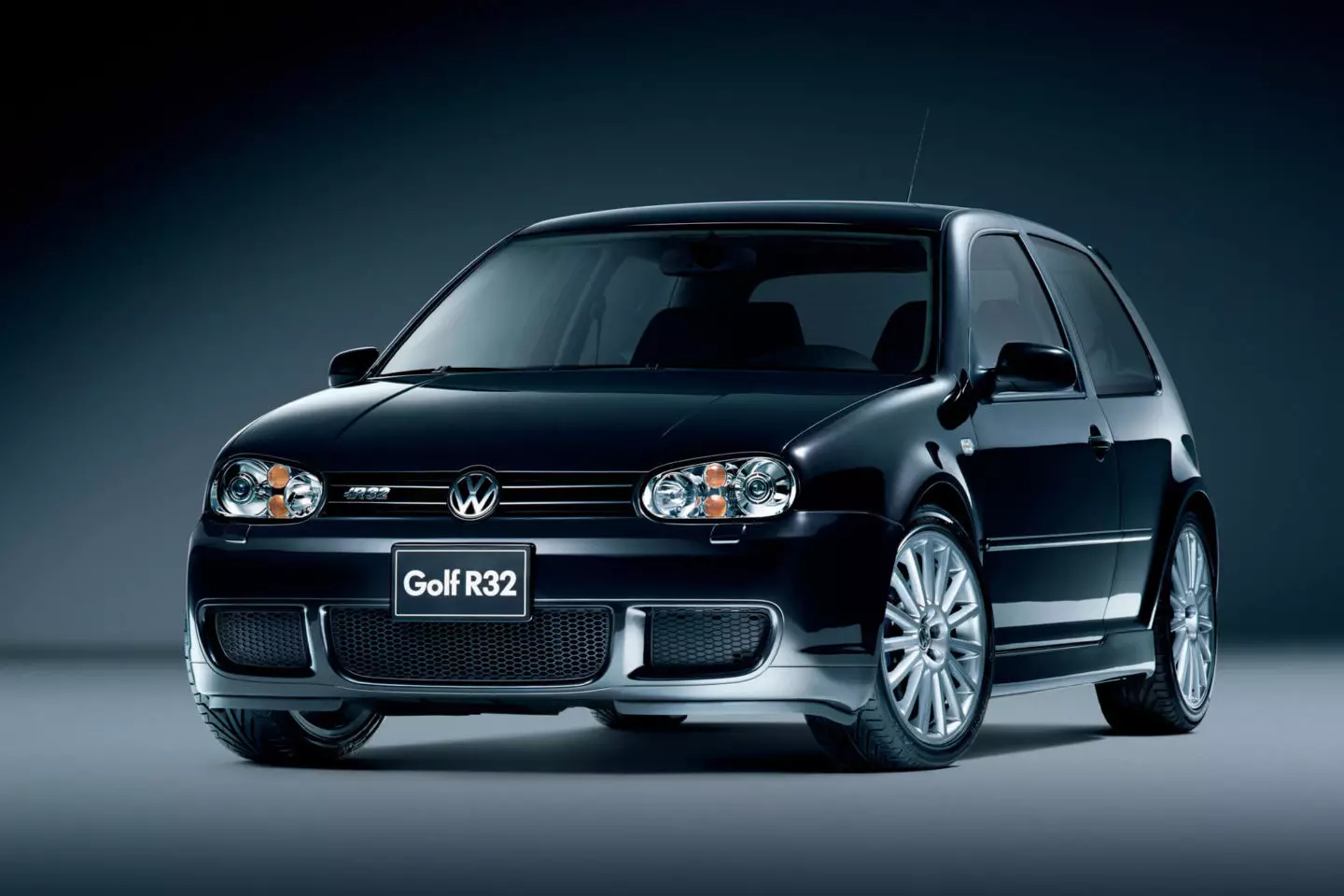
About "Glories of the Past" . It is the section of Razão Automóvel dedicated to models and versions that somehow stood out. We like to remember the machines that once made us dream. Join us on this journey through time here at Razão Automóvel.
